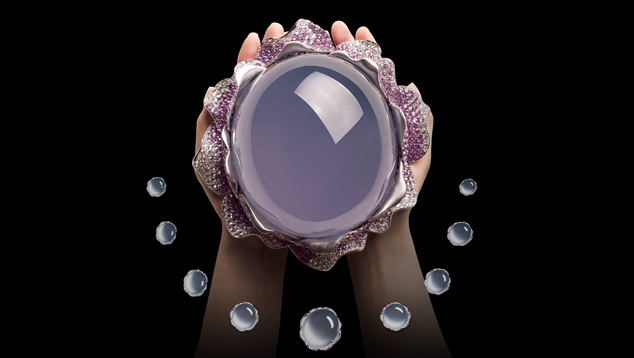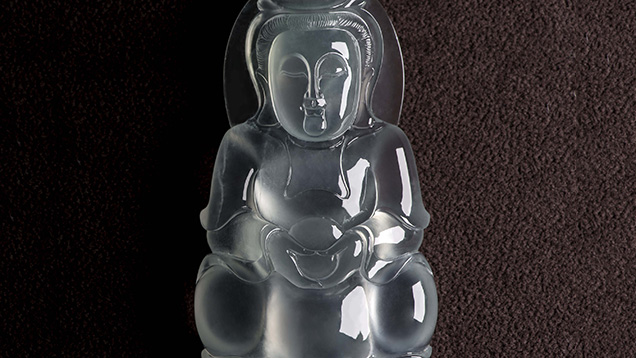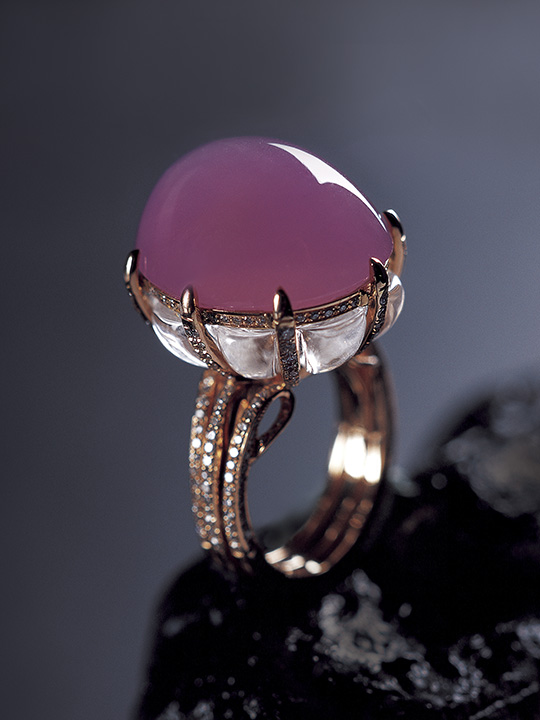Unveiling a Chinese Luxury Jadeite Brand: A Visit to Zhaoyi Cuiwu in Beijing
September 2, 2014

Brand Profile
The brand name “Zhaoyi” originated from the ancient Chinese Palace of the Han Dynasty (206 BC to 9 AD). It was one of the high official titles assigned by the emperors to women who served in the palace. In Chinese, “Zhao” means “illuminating” or “being bright,” while “Yi” means “etiquette.” These concepts are also the core of the Chinese gold-jade culture.Zhaoyi Xintiandi Jewelry Co., Ltd. was formed in Beijing in 2003. From day one, this company has established its image as the leader of Chinese high-end jewelry trends and the inheritor of traditional Chinese jewelry manufacturing craftsmanship. The company integrates jadeite rough purchasing, jewelry design, haute couture design, jewelry manufacturing, jewelry retailing, and brand promotion.
In 2004, Zhaoyi opened its first retail store in Beijing. In 2007, Zhaoyi opened its first flagship store in the Beijing Kunlun Hotel. In that same year, movie star Wenli Jiang walked the red carpet of the international film festival in Rome wearing a Zhaoyi suite consisting of a colorless transparent jadeite necklace and ring. For the first time, fine jadeite jewelry designed and made by Zhaoyi stood out on an international stage.
The store visited by the GIA team in the Grand Hyatt Beijing opened in September 2008. Well-known film stars attended the opening ceremony. In 2012, a new Zhaoyi Cuiwu store image was unveiled at the Shanghai Top Marques private luxury exhibition. International movie star Kar-ling Lau modeled top-quality jadeite jewelry at the show. Since the company’s formation, Zhaoyi has collaborated with many movie stars, and many of them became collectors of Zhaoyi’s fine jadeite jewelry.


Creative Jewelry Design
Targeting the high-end jadeite jewelry market in China, Zhaoyi creates jadeite masterpieces with particular appeal to art collectors. In order to successfully inherit and carry on the gold-jade culture and its thousands of years of history, designers apply groundbreaking Western design concepts to jadeite jewelry. These creative designs attract the attention of the younger generation and the Western world.Company Treasures
When a great designer works with extremely rare top-quality material, masterpieces are expected. Zhaoyi claims both elements as company treasures.


Contribution to the Jade Industry
In addition to promoting and managing the brand, Zhaoyi also played an important role in the formation of the National Jadeite Grading Standard. Because Zhaoyi has access to a huge amount of jadeite of different qualities, it became the sponsor of the research into the grading system. Zhaoyi provided standard samples, and some experts from the company even participated in the research. In December, 2012, the Chinese Standardization Administration officially approved the “transparent jadeite (colorless) classification” standard. This standard was in practice at the end of 2013.Dr. Tao Hsu is a technical editor of Gems & Gemology. Andrew Lucas is manager of field gemology for content strategy at GIA Carlsbad.
DISCLAIMER
GIA staff often visit mines, manufacturers, retailers and others in the gem and jewelry industry for research purposes and to gain insight into the marketplace. GIA appreciates the access and information provided during these visits. These visits and any resulting articles or publications should not be taken or used as an endorsement.
The authors gratefully acknowledge the assistance provided by Ms. Vivian Jiang and Grace Gao from Zhaoyi during our visit to Beijing. We would also like to thank Prof. Xiaoyan Yu and Mr. Jianzhu Xiong from the Gemmological Institute of China University of Geosciences (Beijing) for being our interpreters. Special thanks also go to all the staff working in Zhaoyi Cuiwu.




















.jpg)


